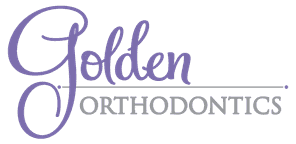So far, we’ve covered the major precursors to modern orthodontics. We’ve traveled through vast spans of time and have come to the most exciting part: The Father of Modern Orthodontics. (Though the French revolution was pretty exciting, depending on which side you were on.) I’d like to be able to say, “On this date, Dadd E. O’Rthontics slapped a proper pair of braces on a child, called it ‘orthodontics,’ and the world was forever changed.” Alas, it’s not that simple.
Before I continue, I should note that there could not have been a “Mother of Orthodontics,” as women were not allowed to practice medicine at the time. This is a tragedy because, as our patients can attest, women make some of the best orthodontists.
You see, there is quite a bit of debate over who deserves the title “Father of Orthodontics.” Some argue that Christophe-François Delabarre wins the honor for introducing the wire crib, a wire placed directly on the teeth, which was probably the first piece of what we would call “modern day” orthodontics. Others vote for Edward Maynard, the first to use gum elastics to correct improper alignment, or Henry Baker, who combined the methods of his predecessors into what he (so humbly) called the “Baker anchorage.”
But these men, crucial as they were, still belong in the precursor category. In my book, Norman W. Kingsley gets the nod, for the same reason I called Fauchard the Father of Modern Dentistry in Part III. To explain what I mean, we need to take a trip to the barber shop. In my time machine.
As recently as 250 years ago, if you had a tooth problem, you went to the barber. “Physicians” throughout the Middle Ages were educated by and involved with the church, most often as monks, and were banned from getting their hands and/or souls dirty with the bloody work of practicing medicine. Their work was relegated to that most enduring, cushiest of jobs – making recommendations.
So, every task that involved cutting some part of a person fell to the barbers. Besides trimming bangs, they performed surgeries of all kinds, administered bleedings (you know, the semi-annual bloodletting to get rid of the blood that’s gone bad from demons or something), and pulled teeth. Not to bleed a dead horse, but it was a very bloody business. The charming candy-striped pole in front of the local barber shop is a curiously morbid remnant of this history: Red for blood, white for gauze.
In general, barbers stopped pulling teeth in the mid-18th century. That’s because dentistry had become a specialty (though it’s now considered a branch of medicine), and its practitioners studied and employed treatments beyond the barbers’ let’s-yank-the-sucker-out approach. Important ideas in dentistry had been percolating for more than a century, but Fauchard’s 1721 book made it a specialty. By collecting those ideas and synthesizing them into basic, consistent principles, he fundamentally changed the approach to treatment in a way no individual invention ever could.
Kingsley did the same thing for orthodontics by writing several books on the subject, most notably his “Treatise on Oral Deformities,” the first standard orthodontics textbook. Kingsley’s work is seminal to the profession I love, so I have to support the assertion made in this 1908 article about him:
“Without doubt, he is the Father of Modern Orthodontia. It was Kingsley who first gathered, in the early day, the then scattered knowledge of that subject, and gave us the first book on Orthodontia ever published.”
(1908 was not just a great year for articles about “Modern Orthodontia,” it was a great year for the planet. It was, of course, the year that the shining city of Bexley, OH, was founded!)
And if somehow you’re still not convinced, get this: Kingsley was also a sculptor and a painter, except instead of using paint, he recreated Rembrandts in sepia by blowing fire through a glass pipe.
